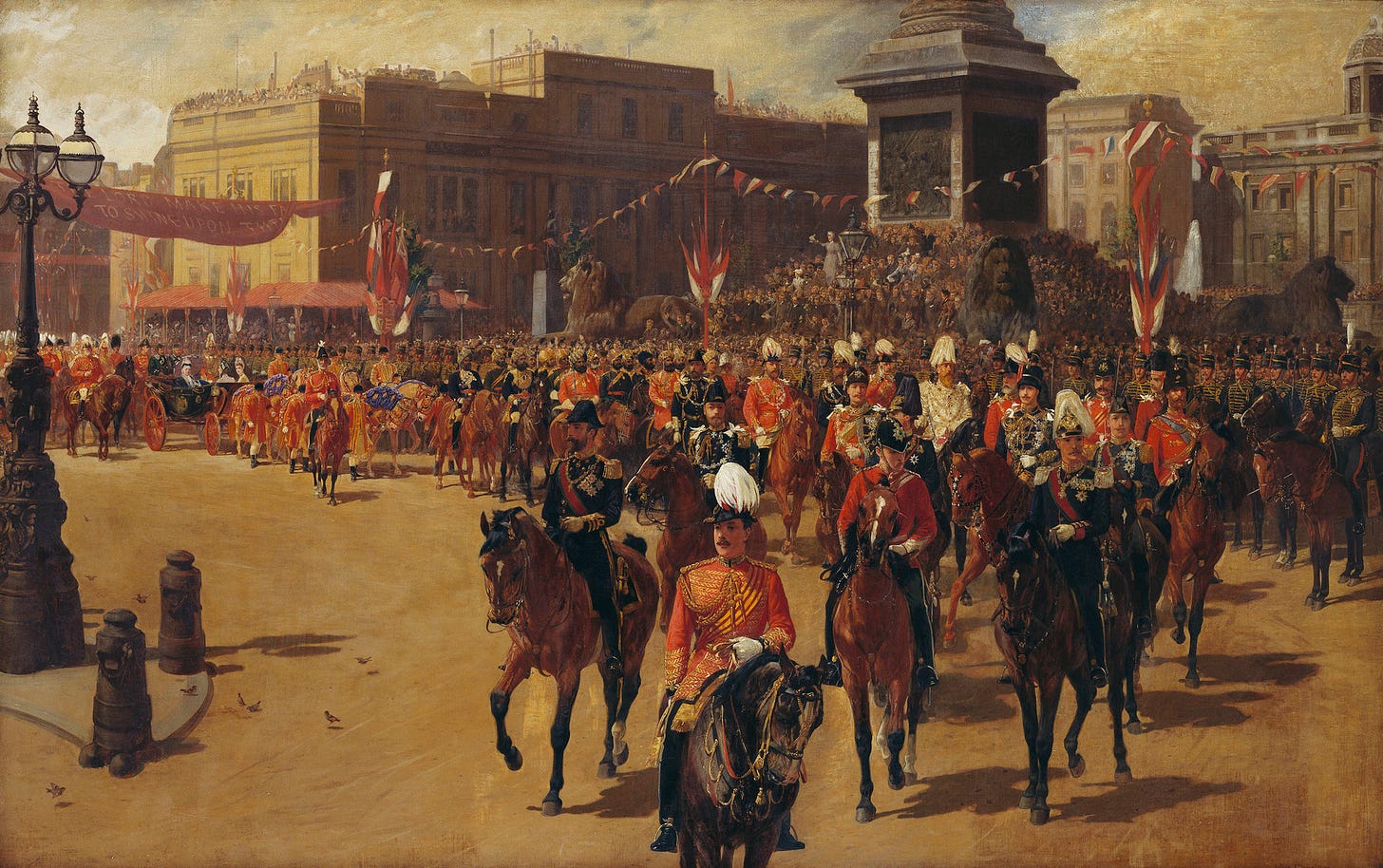What If...
A Neo-Jacobite Fantasy
(with many apologies to Sir Charles Petrie)

"Here's a health unto His Majesty,
With a fa la la la la la la,
Confusion to his enemies,
With a fa la la la la la la.
And he who would not drink his health,
We wish him neither wit nor wealth,
Nor yet a rope to hang himself.
With a fal lal la la la la la la la la,
With a fal lal la la la la la.
—Cavalier Song
This being the Golden Jubilee Year of His Majesty Charles V and IV, By the Grace of God of England, Scotland, Canada, Australia, New Zealand, and of His Other Dominions beyond the Seas, King; High King of All Ireland; Head of the Commonwealth; Defender of the Faith; it is fitting to look back and see how his various realms came to their present happy state. Certainly, things looked very different a half century ago to this and many other observers, although I was only a young, struggling journalist, not even out of my twenties back then.
That the Monarchy survived both the Anglo-Jihad and the Great Reaction was an enormous tribute to the diplomatic skills of His Majesty’s father, William V of happy memory. When he died and our current Sovereign assumed the throne, no older than I was, things looked bleak indeed. What with a uniformed general literally bivouacking at 10 Downing Street, the entire country under martial law, and Parliament sitting at the military’s pleasure, there seemed no decent way out. There had been no election in seven years, and the unicameral Commons only gathered when General Wilberforce needed them to go through the routine of voting in the latest budget – a quick sitting, given that no debate was permitted.
Although the question of a coronation was tabled for the immediate – no one could have foreseen then what actually did happen – the long-expected royal nuptials, postponed due to King William’s final illness, were the first matter of business for the new reign, almost as soon as the accession proclamations had ceased echoing throughout the Commonwealth; these had been simplified, with no promises to maintain the now disestablished Churches of England and Scotland. As with his great-grandmother’s wedding, the joy sparked by the prospect of the ceremony lifted a great many spirits – and as on that occasion, a great many ordinary people sent in their ration tickets to help brighten the ritual further. Charles IV, as he was called then – there had been some surprise, as with his grandfather’s accession, when he took that name rather than George VII; the more so since he had as Prince of Wales been known as George – was wildly popular. His bride, the much younger, beautiful, and glamorous Princess Maria Antonia, eldest daughter of Prince Josef Wenzel of Liechtenstein, sparked some comment as the first Catholic Queen since 1688. More than that, however, despite being her sonless father’s eldest daughter, his succession would pass to a male cousin. What she did receive, however, was his claim to the thrones of the Three Kingdoms as senior inheritor of the House of Stuart. Without a doubt, had that not been the case, the current situation in all the King’s realms would be very different today.

